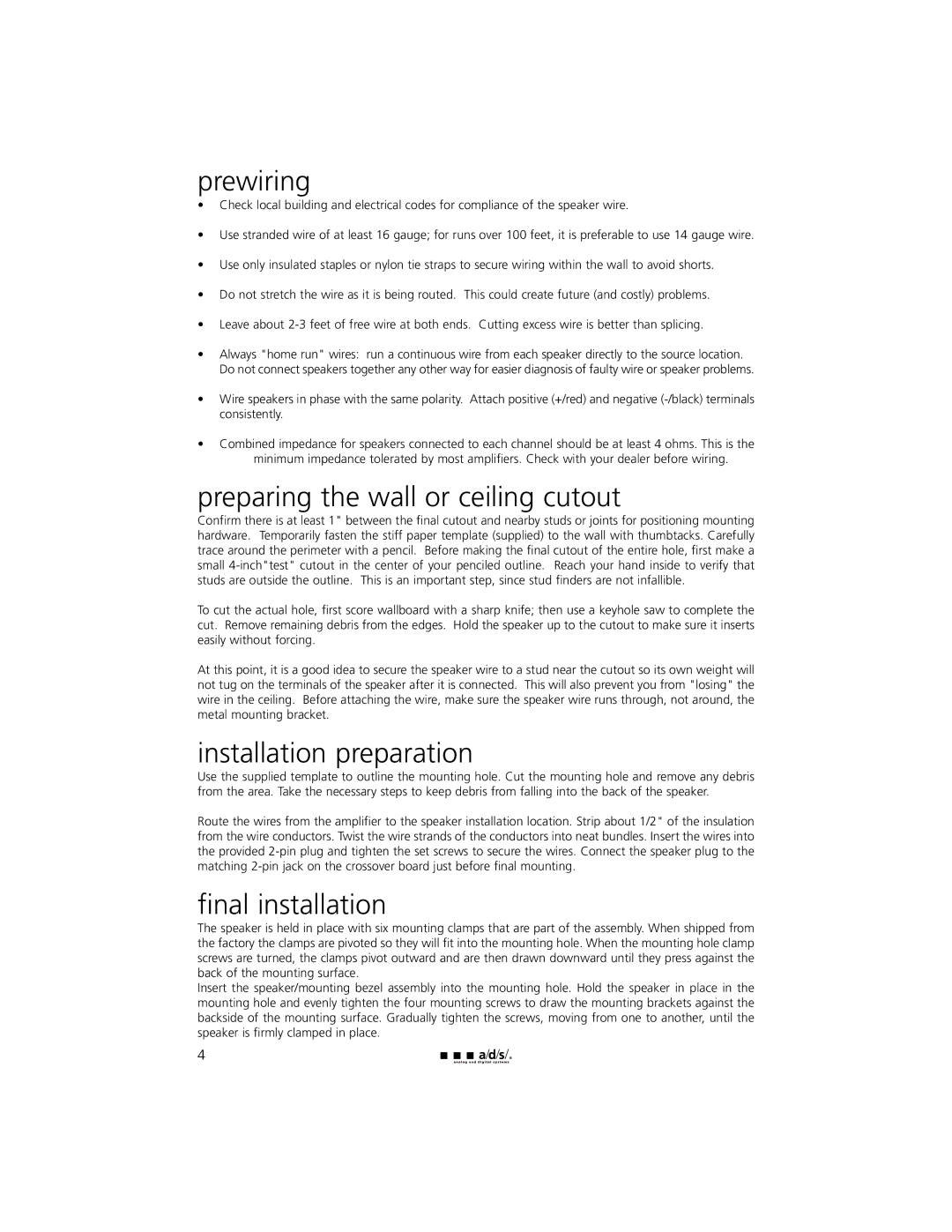C600iw, C900iw, C800iw, C500iw specifications
The a/d/s/ line of speakers, namely the C500iw, C800iw, C600iw, and C900iw, showcases a commitment to high-quality audio performance and innovative technology. Designed for both audiophiles and casual listeners, these in-wall speakers blend seamlessly into home environments while delivering powerful sound.Starting with the C500iw, this model features a 5.25-inch woofer that produces rich bass tones along with a 1-inch silk dome tweeter for crisp highs. The broad frequency response ensures a balanced audio experience across various genres of music. The C500iw is ideal for smaller spaces, providing expansive sound without overwhelming the room. Its easy installation process and paintable grille allow it to match any decor, making it a versatile choice for homeowners.
Next in the lineup is the C600iw, which boasts enhanced sound dynamics through its larger 6.5-inch woofer. This model improves on the C500iw by offering deeper bass response and increased power handling. The C600iw continues to utilize the silk dome tweeter, ensuring smooth midrange and high-frequency reproduction. Equipped with bi-amp capability, it allows for more detailed audio tuning. The C600iw is particularly suitable for medium-sized rooms, delivering room-filling sound that brings music and movies to life.
The C800iw further elevates the listening experience with its robust 8-inch woofer and advanced crossover technology. This model is designed for larger spaces and offers superior bass clarity and extended frequency range. The C800iw’s precision-engineered components make it perfect for dedicated home theater setups or larger living areas where immersive audio is a priority. The speaker's sleek design integrates beautifully into any wall, maintaining aesthetic integrity alongside audio excellence.
Lastly, the C900iw stands as the flagship model of the series, featuring dual 8-inch woofers for unparalleled sound pressure levels. It is equipped with a state-of-the-art ribbon tweeter, providing ultra-fast transient response and remarkable detail at high frequencies. The C900iw is perfect for serious audiophiles and media rooms, ensuring an engaging audio experience for movies, music, and gaming alike. With superior build quality and advanced materials, these speakers promise longevity and performance.
Collectively, the C500iw, C600iw, C800iw, and C900iw demonstrate a/d/s/’s dedication to innovation in audio technology. Each model caters to different spaces and preferences, ensuring that every listener can find the perfect in-wall speaker to meet their needs. The seamless integration of design, functionality, and impressive audio fidelity makes these models standout choices for anyone looking to elevate their home sound system.
